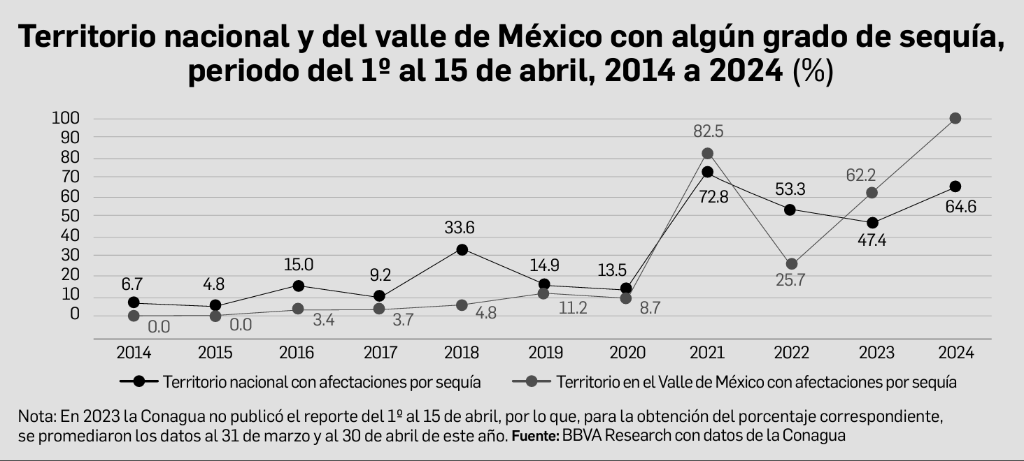Mexico City. The inequality experienced by the country is also reflected in the water supply. The inhabitants of half of the low-income households receive water in batches, that is, irregularly, while among higher-income families this situation only occurs in a sixth of the homes, revealed research published this week.
The magnitude of the shortage becomes relevant at a time when, with data updated to the first half of April, two thirds of the national territory had some degree of drought, according to official data, and in 11 percent of the country it was of an exceptional degree. That is, the highest degree achieved, the BBVA study area was announced with figures taken from various organizations.
According to the study and data from the National Water Commission (Conagua), in the particular case of the Valley of Mexico basin, on the same date indicated, 100 percent of the territory was affected to some degree by drought, somewhat which has not happened since records exist.
At the same time that lower-income families have little or no water supply, there are industries that monopolize the supply in various entities of the country.
According to Conagua figures, more than half of the water consumed in the country was by the agricultural sector, which includes agriculture, agroindustries and livestock use, while in second place is public-urban and domestic use, with 14.7 percent. of the total supply.
The remainder is divided into water intended for multiple uses, thermoelectric plants, industries, commerce and services, aquaculture and other uses.
By state, Sinaloa stands out as the largest consumer of water in the country, with 10.6 percent of the national total. Of this state consumption, 93 percent corresponds to the agricultural sector.
BBVA highlighted that the case of Guerrero is peculiar, since it is the only state where the main use of water is allocated to the operation of thermoelectric plants, with more than half of the consumption in the state, or 3.5 percent of the total. at the national level.
The expense corresponds to the Petacalco thermoelectric plant, which is one of the largest of its type in Latin America, and which operates with coal; hence it demands high volumes of water for cooling
.
Without infrastructure, 2.6 million homes
BBVA stated that at the national level, 93.1 percent of households in Mexico had the pipe infrastructure for the public supply of drinking water in their homes, but the remaining 6.9 percent, which is equivalent to 2.59 million homes, do not receive it. the piped water in your home or on the land where it is located.
It could be believed that this is mainly due to the dispersion and remoteness in rural areas, but of the total number of households with this deficiency, 1.55 million are in rural areas (59.9 percent) and 1.04 million are in urban areas (40.1 percent). ).
At the same time, he expressed, having a drinking water pipe that reaches the home or the land does not guarantee having this vital liquid in the home every day, since it is recorded that one in every three homes in Mexico that have The public service pipeline infrastructure does not provide them with daily water supply.
With figures from 2022, he pointed out, in 24.6 percent of homes water arrives two or three times a week and in 8.8 percent the supply is once a week or from time to time.
“Obvious inequalities are observed between the socioeconomic level of households and the frequency with which drinking water arrives by pipe… In the high socioeconomic stratum, 17 percent of households indicated that in 2022 they would receive water by batch, for the middle stratum this proportion increased to 32.4 percent and in the low stratum almost half of the homes or 49.5 percent received water by batch,” he added.
#poor #households #country #receive #water #batch #BBVA
– 2024-04-29 15:33:09
